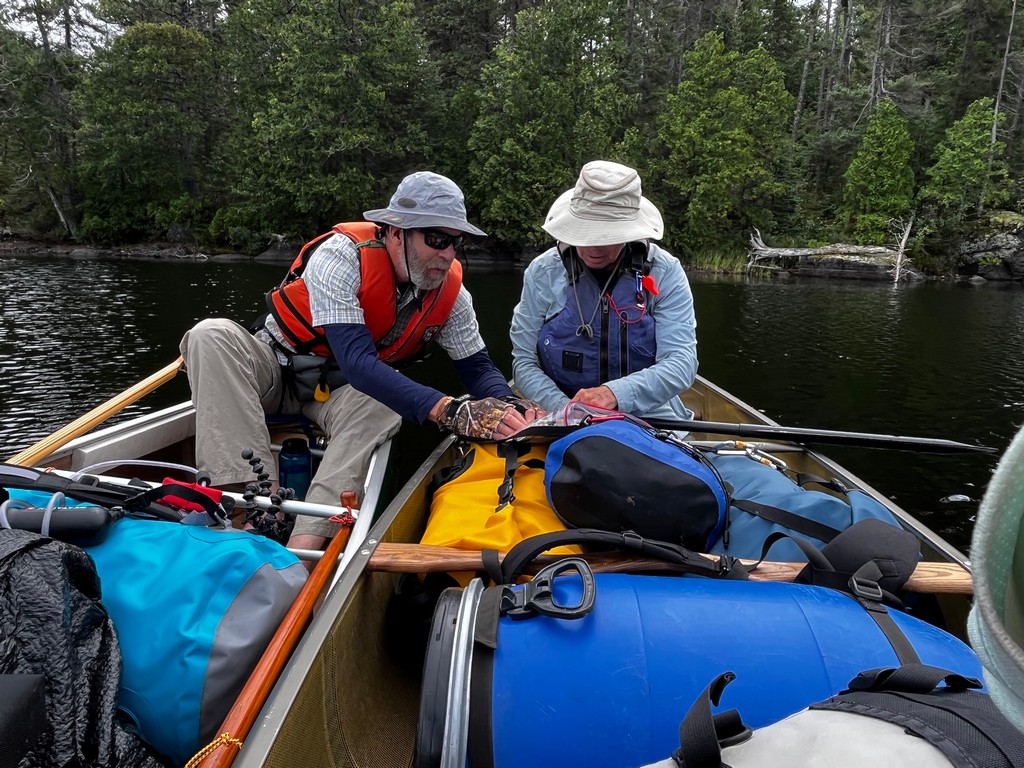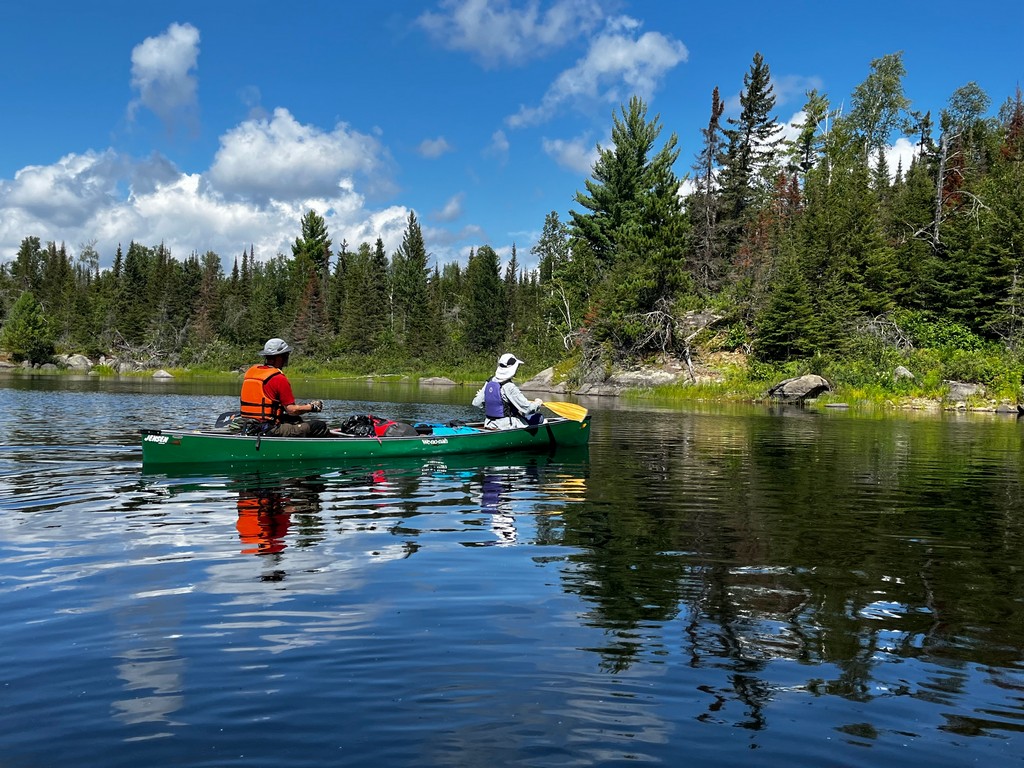August 15-25, 2022 – 11 days from Snowbank Lake to Moose Lake.
By Louise R.
On this challenging and beautiful wilderness trip we paddled across 25 different lakes, from small, marshy ponds to large crystal-clear open lakes. On this trip route, we also had 28 portages and hiked over 20 miles.
We began our trip in Ely, MN on August 14 by meeting our group and checking in at Canoe Country Outfitters, where we picked up our trip permit and all rental gear. We stayed the night at their on-site lodging and took time to finish getting organized for the trip.
On the morning of Aug 15 we departed Canoe Country Outfitters and drove to the launch point, at Snowbank Lake Entry Point 27. We dropped off gear and began the vehicle shuttle with the outfitter driver. The people not driving stayed with the gear at the launch point.
At approximately 11 a.m. we launched with two canoes onto Snowbank Lake and took the portage in Wilderness Bay to Parent Lake. On night 1, we camped on Parent Lake. On day 2 we paddled across Parent Lake and portaged into Disappointment Lake. We paddled across Disappointment Lake and portaged into Ahsub Lake, where we camped on night 2.
On Day 3, we paddled across Ahsub Lake and down a channel with many flowering lily pads and took a portage into Jitterbug Lake. From Jitterbug we crossed into Adventure Lake, Jordan Lake, took a difficult portage into Ima Lake. For night 3 we camped at a lovely campsite on Ima Lake with a great sunset view.
On Day 4 we paddled across Ima Lake, Hatchet Lake, and Thomas Lake, where we set up camp. Once we departed Ima Lake, we left most other people behind and were truly in the wilderness. While we met other paddlers on portages and saw them as we passed campsites, we saw very few other canoes on the water.
On Day 5, we paddled across Thomas and down a narrow channel into Fraser. There was a short portage into Gerund Lake and set up camp.
On Day 6, we paddled from Gerund to Ahmakase Lake, Wisini Lake, and crossed Strup Lake. There was a steep portage from Strup into Kekekabic Lake, where we found a campsite for nights 6 and 7. Kekekabic is a spectacular, large lake. While winds could be challenging, we did not experience any issues with difficult headwinds.
The morning of Day 8 we did get a late start due to thick, white fog. In the morning fog, the water, canoes, and other islands were not visible through the fog. The fog lifted about 11 a.m. We crossed the Kekekabic Ponds and portaged into Eddy Lake, and into the South Arm of Knife Lake. This was another steep portage. For nights 8 and 9, we camped on the South Arm of Knife Lake.
On Knife Lake, we paddled both on the Canadian side of Quetico Provincial Park and on the U.S. side of the border. This is also where we saw several Bald Eagles and an Osprey.
On Day 10, we paddled down Knife Lake to Big Knife Portage on the Ontario side of the border and paddled from Knife Lake to Melon Lake, to Carp Lake, to Birch Lake, where we found a campsite.
On Day 11, we paddled down Birch Lake to Prairie Portage and visited the Quetico Provincial Park Ranger Station, then crossed back to paddle across Sucker Lake, Newfound Lake, and into Moose Lake. We paddled down the length of Moose Lake to the takeout point at Canoe Country Outfitters.
This year, it was an unusually wet August – it rained on us nearly every day. Our group ended up pushing on the last day to take out one day early due to weather. While this trip can be done in 8 to 9 days, we planned for 11 nights and 12 days in case of late starts and bad weather. There were two days where we had to pull off the water and find shelter due to a lightning storm.

If you are looking for a flat water, wilderness canoe trip, this was a spectacular route. From Knife Lake to Moose Lake, there were many other paddlers and steep competition for campsites. It is strongly advised to start early and find a campsite by 2 p.m. If we begin looking for a campsite closer to 4 p.m., you might have trouble finding a campsite. There were several days when we had to push farther than planned due to campsites being occupied. Many campsites are difficult to spot, you really must pay attention to your map and GPS and look for the established fire grate to find the established campsite.

